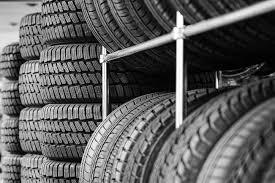The Vulcanization of rubber
Body
The inventor of vulcanized rubber. He was born in New Haven, Connecticut, 1800. His career was very eventful. He failed as a blacksmith, but he succeeded after 10 years of labor, amidst all the handicaps of poverty and privation, he produced his new method of hardening rubber by means of sulfur in 1844. He spent many years researching ways to improve the quality of natural rubber or rubber, so that it does not become brittle in the cold, and soft and sticky in the heat.
Goodyear was involved in a series of problems as a result of the infringement of its rights to the inventions. His patents lately numbered 60, and both medals and honors were awarded to him in London and Paris. Goodyear died in 1860.
Rubber was the name of a kind of rubber used by the Indians of Central and South America, which was extracted from a tree, so it was a natural substance that had been used for centuries and before being discovered by Columbus who presented it to western society. "Rubber" came from the Indian word "cahuchu," which means "crying wood." Natural rubber was extracted from the sap that oozed from the bark of a tree.
The name "rubber" comes from the use of the natural substance as a pencil eraser that can "erase" pencil marks and is the reason it was then called "rubber". In addition to pencil erasers, the rubber was used for many other products, however, the products did not maintain their properties at extreme temperatures, becoming brittle in winter.
During the 1830s, many inventors tried to develop a rubber product that could last all year. Charles Goodyear was one of the inventors, who achieved the greatest achievements, and which are used to this day.
The story goes that in 1834 a rubber life preserver came into his hands from India's Roxbury Rubber Company in New York City and he promptly invented an improved valve for the device. When Goodyear tried to sell his design to Roxbury, the manager told him that unfortunately it was no use the rubber itself was what he needed to improve, not the valve.
Consumers were fed up with the way rubber melted in hot weather and mild in cold. Goodyear's fascination with rubber instantly became a lifelong challenge: he was going to find a way to make rubber useable.
For the next five years, Goodyear experimented with rubber, both in his own kitchen and in other workshops. He didn't have much knowledge of chemistry, and besides, he had no money, and only the crudest clothes for work equipment. His family lived in poverty. In 1836 Goodyear had had some success in treating rubber with nitric oxide, but his new rubber project was wiped out by the economic panic of 1837.
A new project with Nathaniel Hayward seemed certain when the United States government ordered the manufacture of 150 sulfur-treated rubber bags for the post office. The bags, however, disintegrated in the summer heat.
The breakthrough came in 1839 when Goodyear accidentally discovered the process of vulcanizing rubber by mixing sulfur and applying high heat to produce a tough, flexible product. Similar to the Scottish Macintosh's raincoats, such sacks were made of flax cloth impregnated with rubber. And, like Scottish garments, they tended to stick on hot days. In addition, they cracked quickly, rendering them unusable for their intended purpose. So soon Goodyar had more to do with claims than successive supplies.
As the story goes, it would be around 1840 when the man with such a hopeful last name really had his "good year". While carrying out experiments in his laboratory, which looked more like a machine shop, Charles N. Goodyear dropped some crumbs of rubber on which he had sprinkled sulfur crystals and they landed on the plate of a stove that was on. . When he examined the particles more out of curiosity than real interest, the hobby chemist found to his surprise that the rubber had lost its stickiness and, at the same time, its fluidity. The plastic and tenacious matter had become solid material, to the admiration of the master.
The rubber had turned into gum. Because, as stated in the technical treatises, rubber is understood as all polymers not yet cross-linked, whether natural or synthetic. After polymerization (vulcanization) rubbery materials are obtained, called elastomers.
Goodyear struggled for more than five years in the same penury before being able to patent its processing in 1844. Instead of profiting from his quest, which was ultimately successful, Goodyear licensed the manufacture of rubber at ridiculously low prices, and he retired from manufacturing himself to invent new uses for his products.
Industrial pirates infringed on his patents, and he had to hire a lawyer, Daniel Webster (1782-1852), to secure his rights (successfully, in 1852) to what he never managed to profit from his discoveries. He was unable to patent his vulcanization process abroad; Thomas Hancock from England had already done it.
Microwave Preheater Machine Suppliers in Malaysia
Microwave Booster Suppliers in Sharjah











Comments